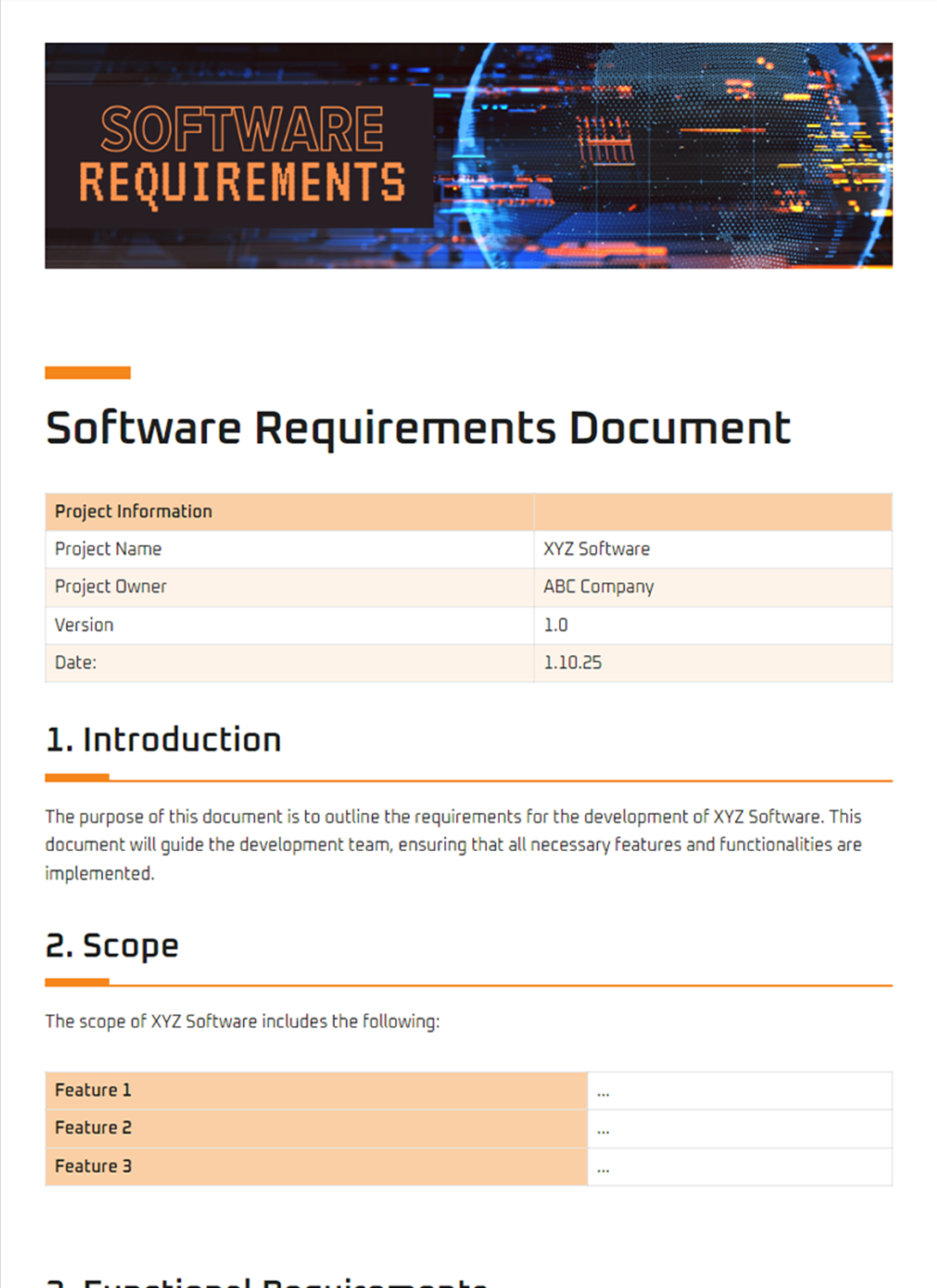Creating a thorough system requirements specification (SRS) is crucial before embarking on any software development project. It defines the functionalities, performance, and constraints of the system to ensure it meets the stakeholders’ needs. Using a system requirements specification template can simplify this process and enhance the quality of your SRS.
An effective SRS template will typically include sections for the system’s scope, functional and non-functional requirements, user requirements, environmental constraints, and acceptance criteria. By using a template, you can ensure that all necessary information is captured in a clear, organized manner, facilitating communication with stakeholders and minimizing the risk of misunderstandings.

Understanding the Scope of System Requirements
The scope of your SRS should clearly define the boundaries of the system being developed and exclude any out-of-boundary features or functionality. This ensures that the development team focuses on the essential aspects of the system and avoids unnecessary complexity or scope creep.
Establishing a clear scope also helps manage stakeholder expectations and prevents conflicts down the road. By defining the system’s boundaries upfront, you can avoid misunderstandings and ensure that the system meets its intended purpose.
To determine the scope of your SRS, consider the following: the problem or opportunity that the system is intended to address, the specific goals and objectives of the system, the constraints and limitations that apply to the system, and the assumptions and dependencies that are relevant to the system.
Once you have a clear understanding of the scope, you can begin to identify and document the functional and non-functional requirements of the system.
Documenting Functional and Non-Functional Requirements
Functional requirements define the specific tasks that the system must be able to perform, while non-functional requirements define the broader characteristics of the system, such as performance, reliability, and security.
To identify functional requirements, start by considering the system’s intended users and their goals. What tasks do they need to accomplish with the system? What specific actions should the system be able to perform?
Non-functional requirements, on the other hand, should address aspects such as the system’s speed, availability, accuracy, and scalability. These requirements often have a significant impact on the system’s design and architecture.
By carefully documenting both functional and non-functional requirements, you can ensure that the system meets the needs of its users and stakeholders.
Conclusion
Using a system requirements specification template can significantly streamline the SRS development process and enhance the quality of your final document. By following the template’s structure and guidance, you can ensure that all necessary information is captured in a clear, organized manner, minimizing the risk of errors and misunderstandings.
An effective SRS is a critical foundation for successful software development projects. It serves as the touchstone for all subsequent development activities, ensuring that the system meets its intended purpose and delivers value to its stakeholders.